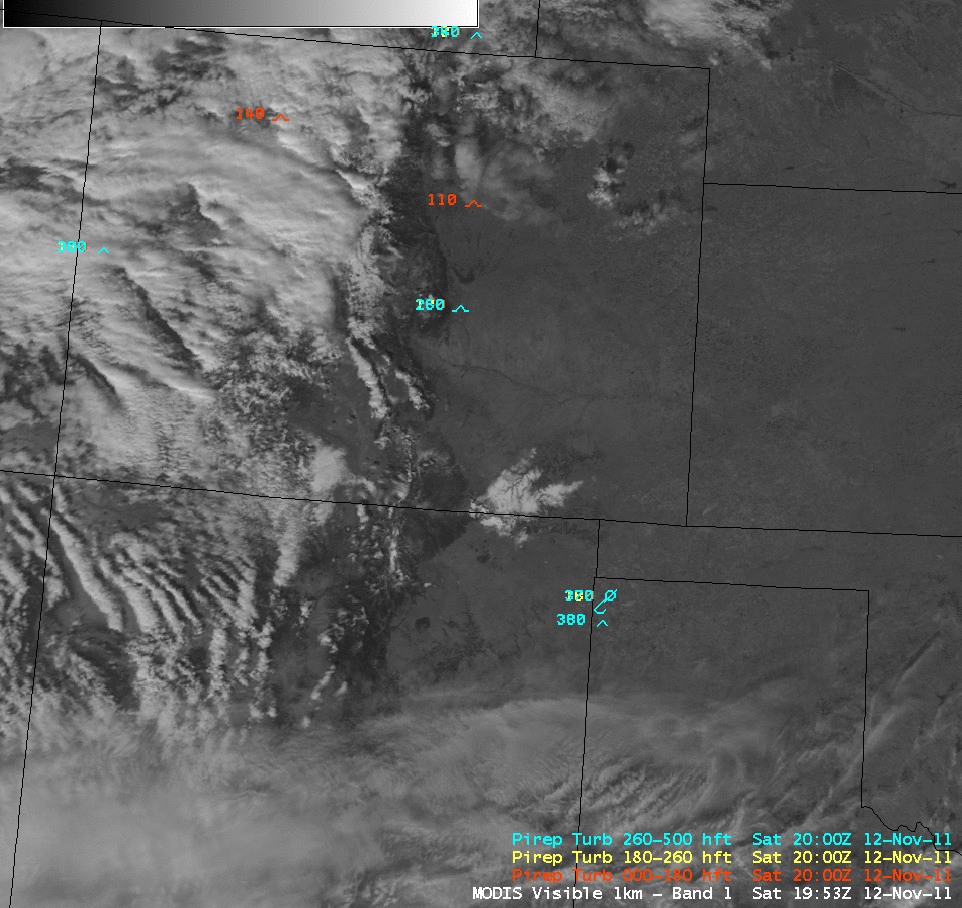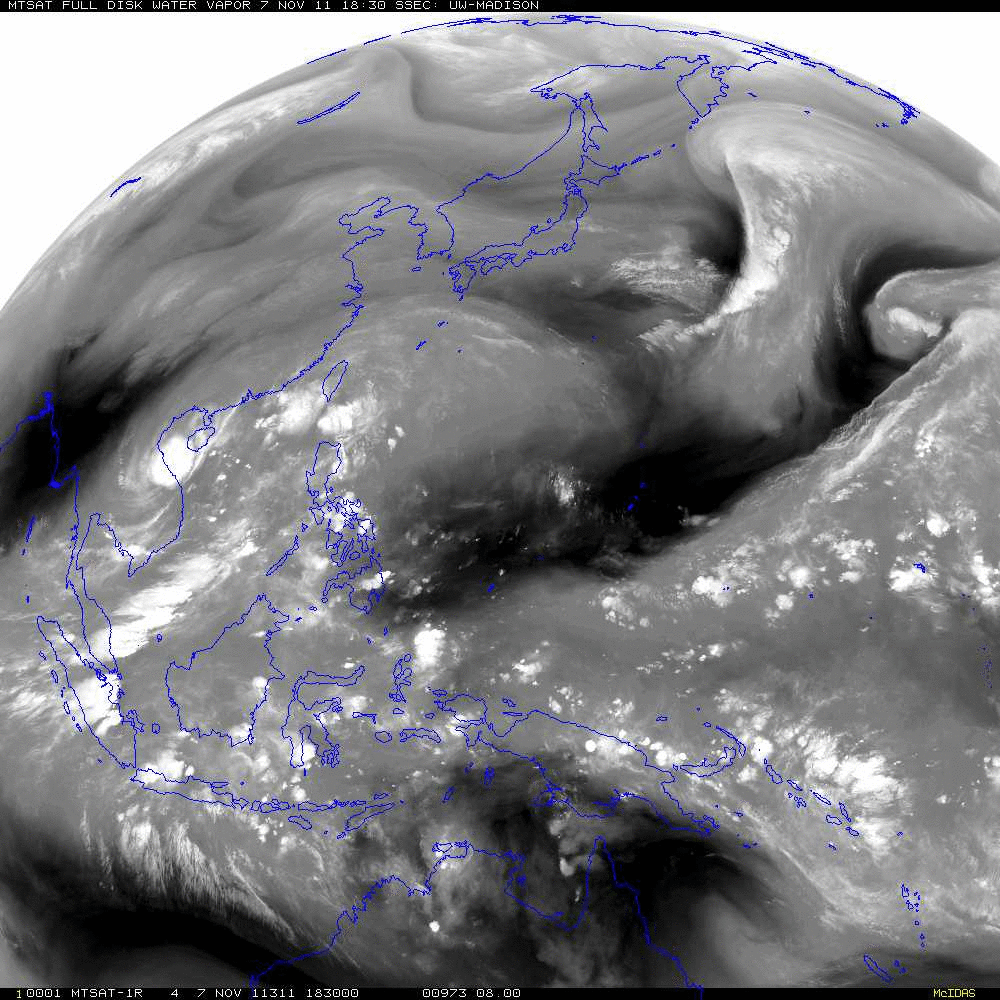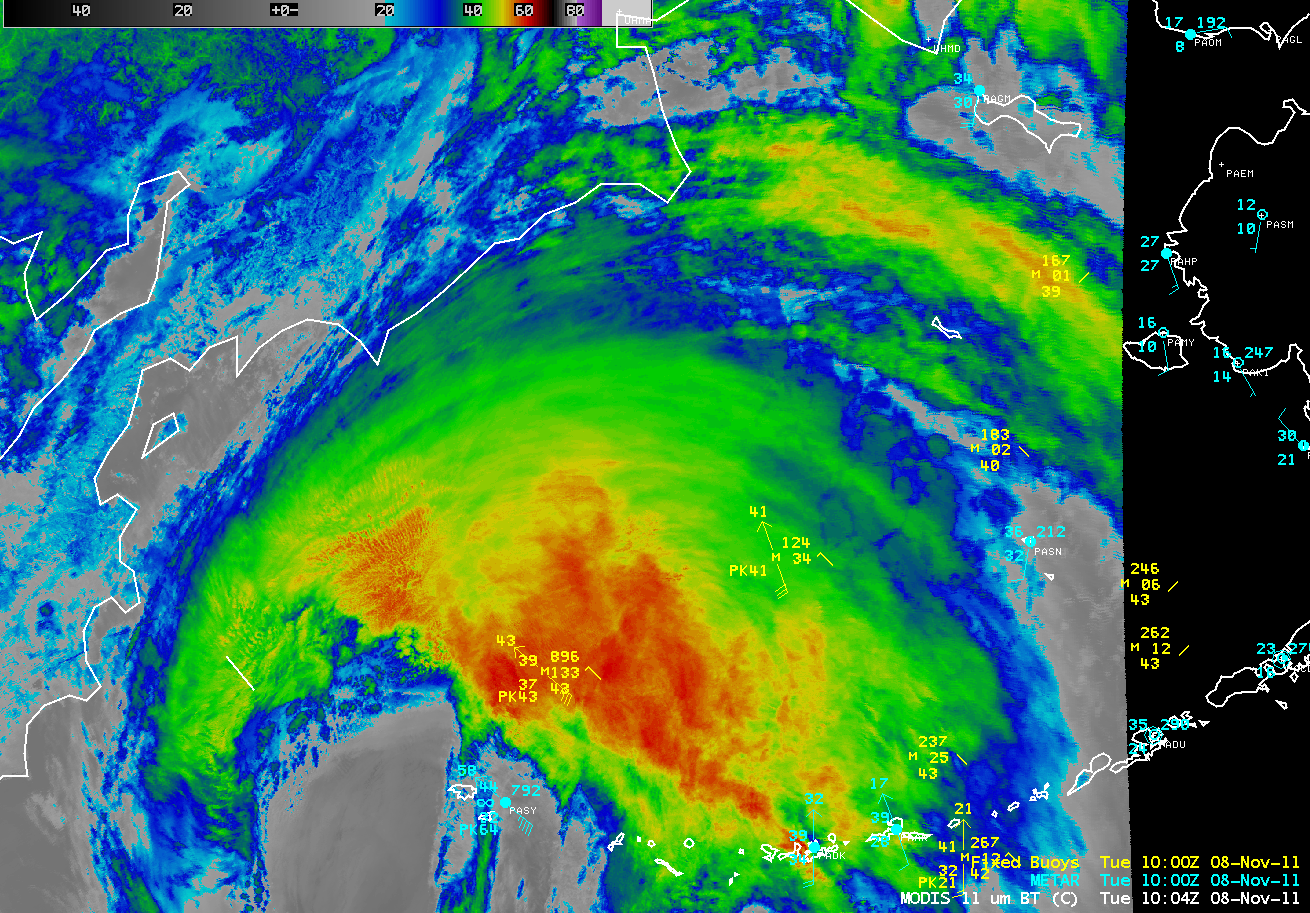We received the following email from Ken Waters of the National Weather Service forecast office in Phoenix, Arizona:I noticed something interesting in this morning’s visible imagery off the Baja California coast. Here’s a link: https://docs.google.com/open?id=0B2ktDMIN5qWfODI2OTYzYjgtZjJkMS00MTU5LTk2ODctYzdhNzY5M2Y2MWIx I’m looking at the apparent wave pattern that’s going “upstream” towards the northeast whereas the low... Read More
We received the following email from Ken Waters of the National Weather Service forecast office in Phoenix, Arizona:
I noticed something interesting in this morning’s visible imagery off the Baja California coast.
Here’s a link: https://docs.google.com/open?id=0B2ktDMIN5qWfODI2OTYzYjgtZjJkMS00MTU5LTk2ODctYzdhNzY5M2Y2MWIx
I’m looking at the apparent wave pattern that’s going “upstream” towards the northeast whereas the low level flow is mostly towards the south. Is that a gravity wave? If so, what causes it? The vis can only go so far back so I looked at the IR and couldn’t find anything obvious.
Great question Ken — it certainly appears to be some sort of internal gravity wave, but what caused it and why was it propagating against the ambient flow shall remain a bit of a mystery until we can dig into this case a bit further. One more event for the “What the heck is this?” blog category.
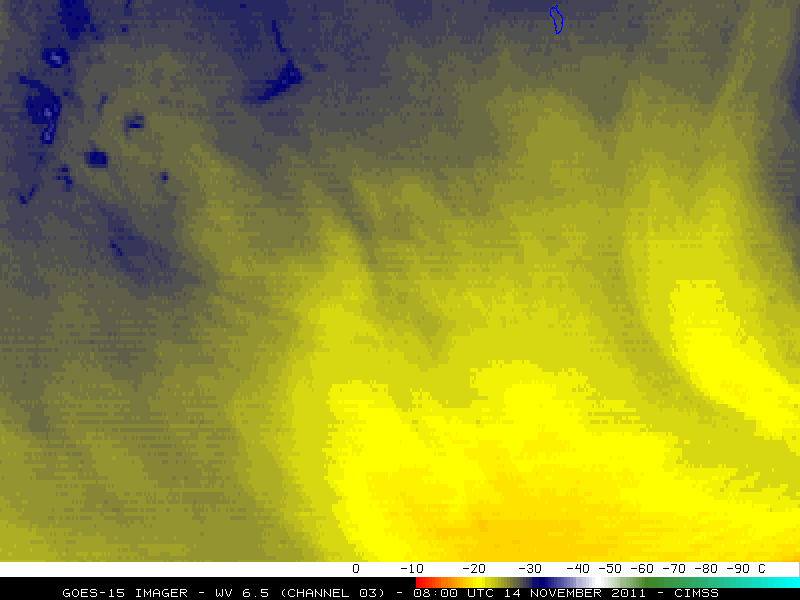
GOES-15 6.5 µm water vapor channel images + GOES-15 0.63 µm visible channel images
McIDAS images of GOES-15 6.5 µm water vapor channel data (prior to daylight) and then GOES-15 0.63 µm visible channel data after sunrise (above) on 14 November 2011 tell us one thing: this gravity wave was apparently fairly deep in the vertical, since it exibited a signal on both the water vapor channel imagery (which generally senses radiation from the middle troposphere: San Diego 12:00 UTC rawinsonde water vapor chanel weighting function profile) as well as on the lower-tropospheric cloud features seen on the visible channel imagery.
Note that there was a second packet of shorter-wavelength gravity waves that could be seen in the far southwestern portion of the GOES-15 visible image satellite scene toward the end of the animation. This second packet of gravity waves was very evident on a 500-meter resolution Aqua MODIS Red/Green/Blue (RGB) true color image at 21:21 UTC (below).
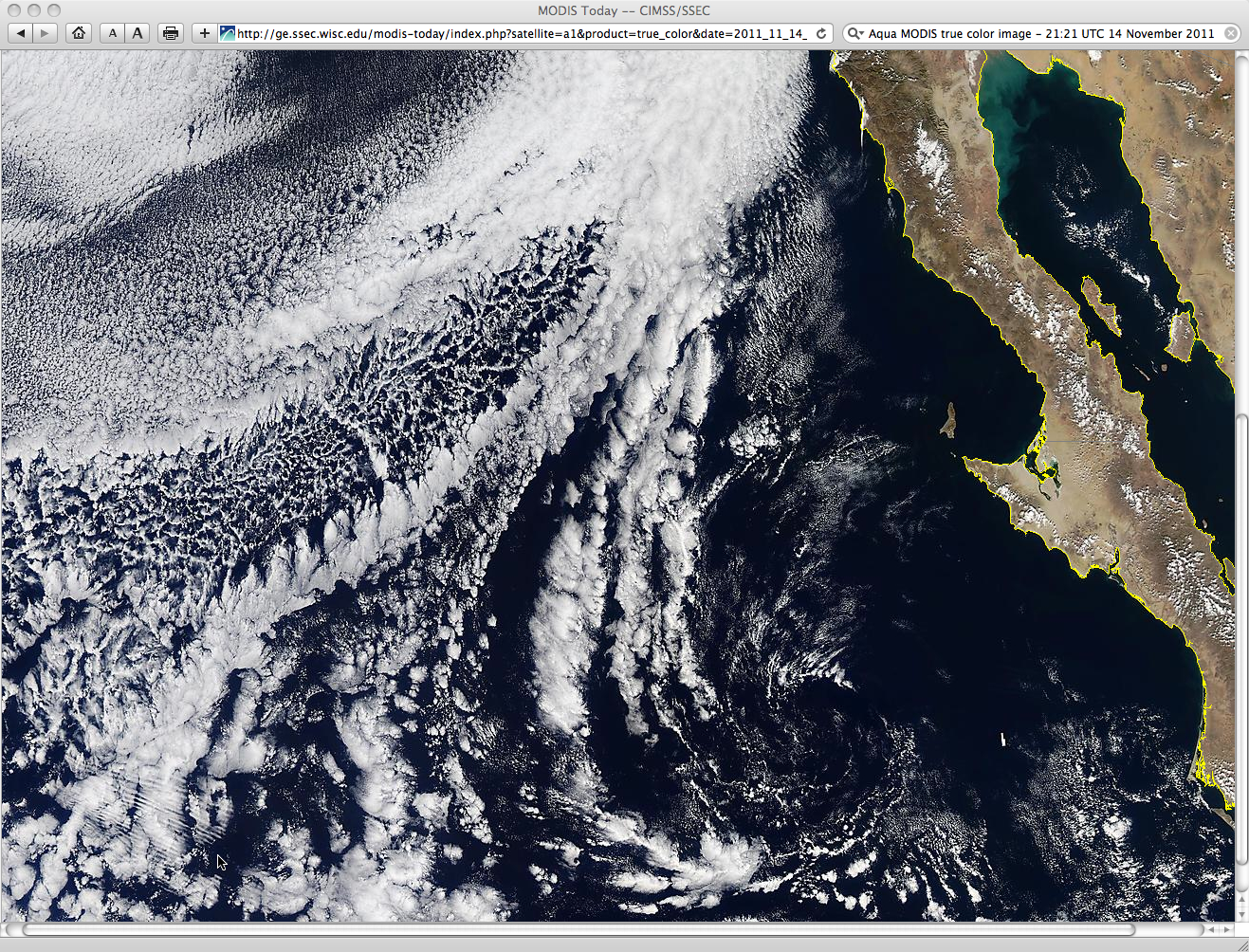
Aqua MODIS true color image
Gravity waves are usually ducted within a well-defined temperature inversion. A look at the 12:00 UTC rawinsonde profile from San Diego, California (below) did indicate the presence of a few inversions that might have been capable of ducting such a gravity wave — but the inversions existed at multiple levels.
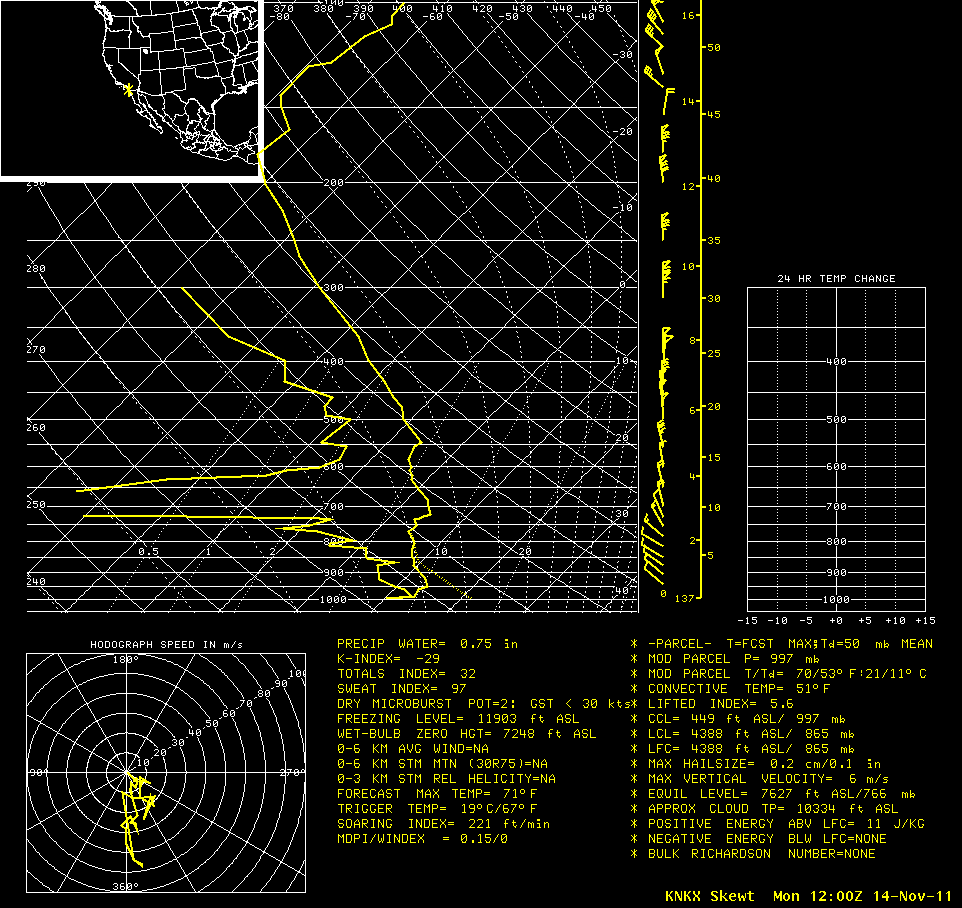
San Deigo, California 12:00 UTC rawinsonde profile
An AWIPS image of 18:00 UTC MODIS 0.65 µm visible channel data with overlays of 1-hour interval MADIS satellite winds (below) did not reveal any atmospheric motion vectors with a southwesterly component – but these would likely have been rejected by the winds quality control algorithms, since such a motion would have differed too greatly from the model first guess wind fields at 850 hPa, 500 hPa, 300 hPa, and 250 hPa.

MODIS 0.65 µm visible channel image + MADIS 1-hour interval satellite winds
Regarding the effect of the gravity wave seen on the lower-tropospheric clouds bands, a MODIS 11.0 µm IR image detected cloud top IR brightness temperatures around +4ºC, which on a RUC model sounding at that location apparently corresponded to a cloud top height around 12,550 feet (below) — however, this value seemed to be a bit high judging from the appearance of the cloud band features on the GOES and MODIS visible and IR imagery.
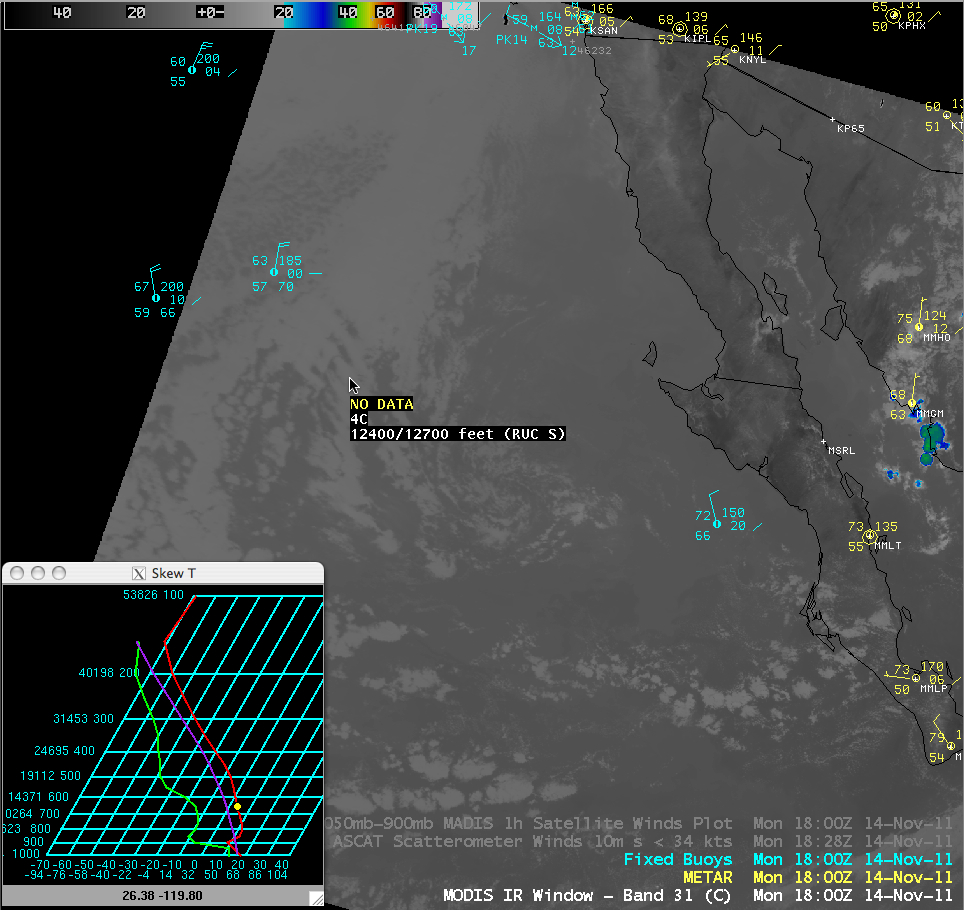
MODIS 11.0 µm IR image + RUC model sounding
On the other hand, POES AVHRR Cloud Type and Cloud Top Height products indicated that these low-level cloud bands were water droplet clouds, with cloud top heights of around 1 km (below) — much more typical for marine boundary layer cloud features over this region.
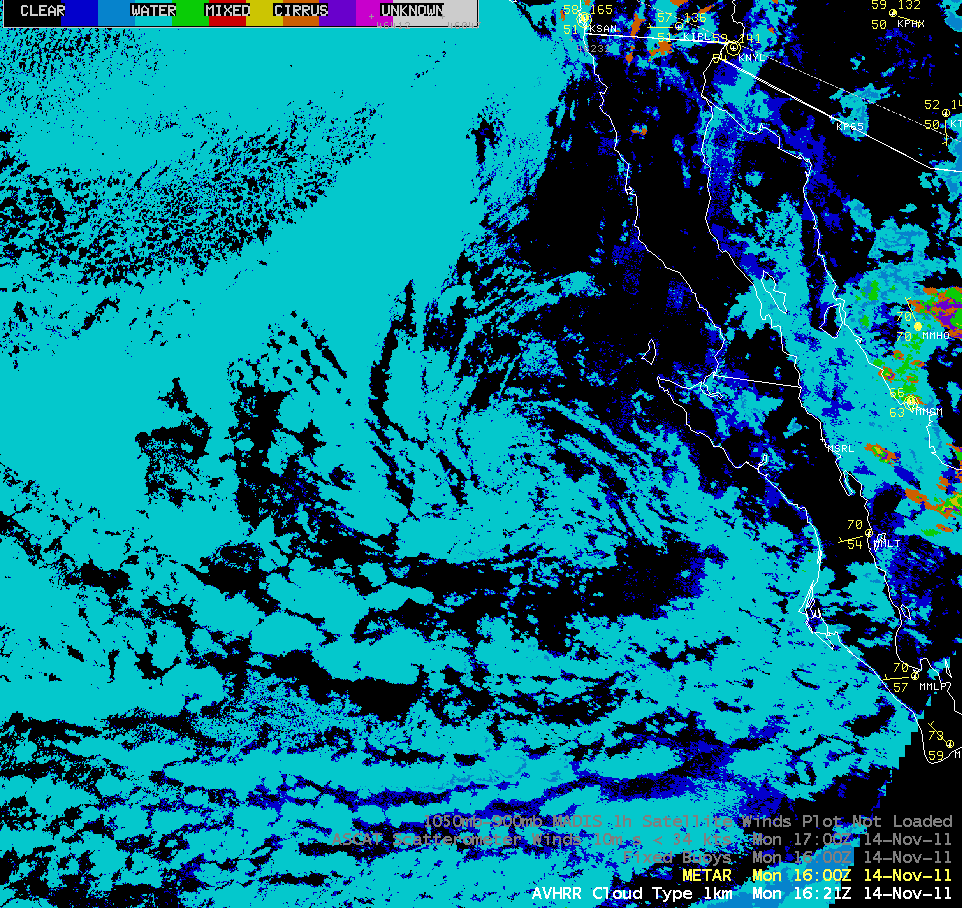
POES AVHRR Cloud Type product
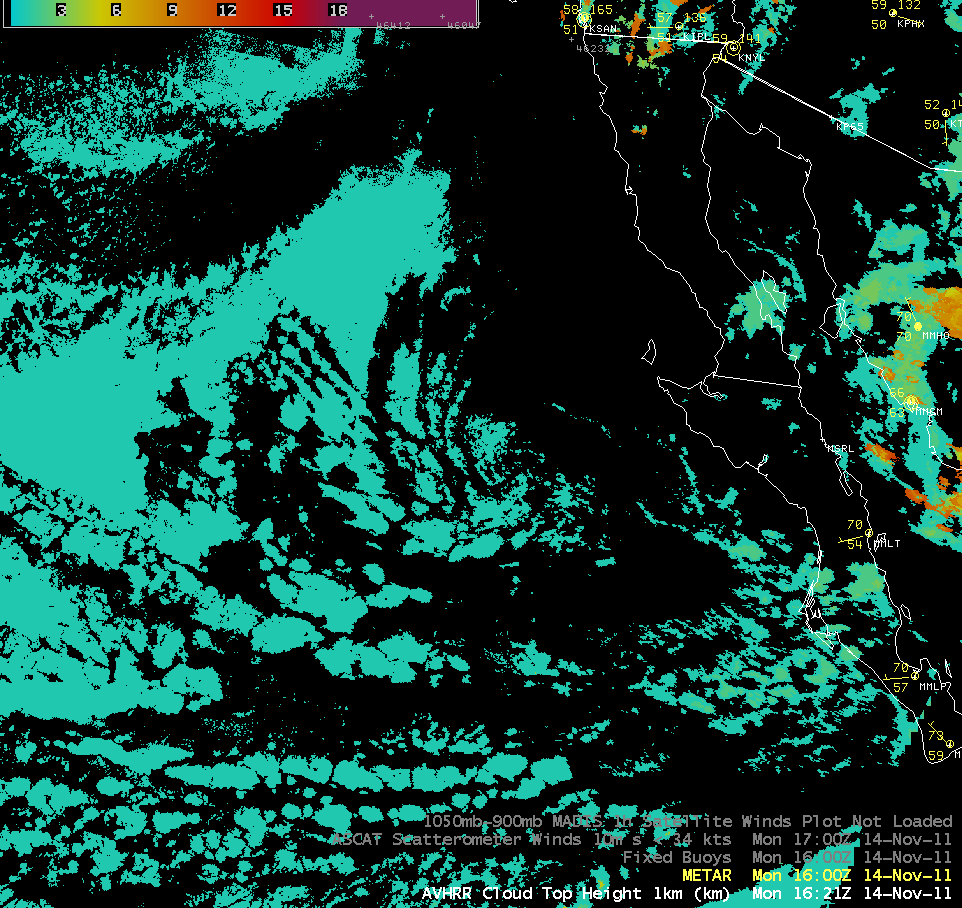
POES AVHRR Cloud Top Height product
View only this post
Read Less










